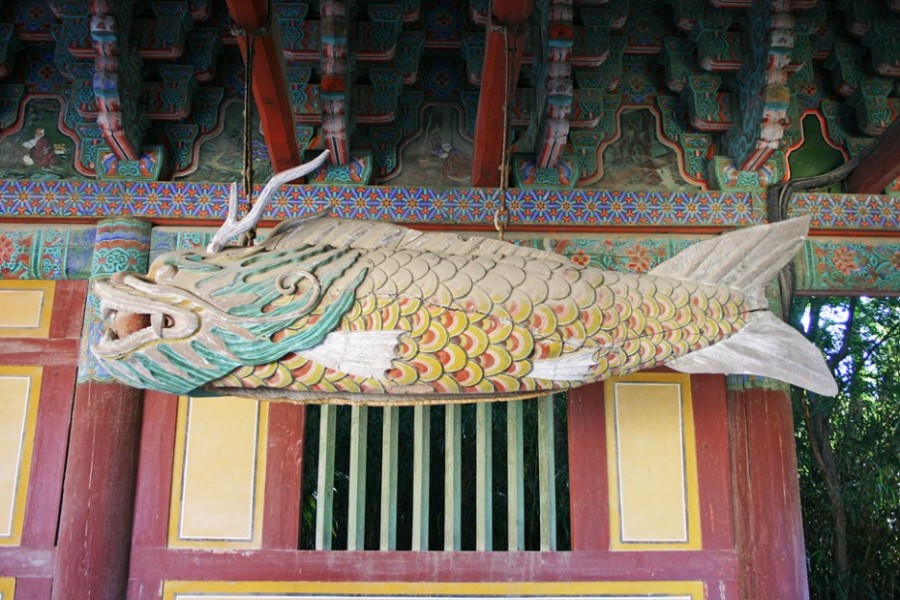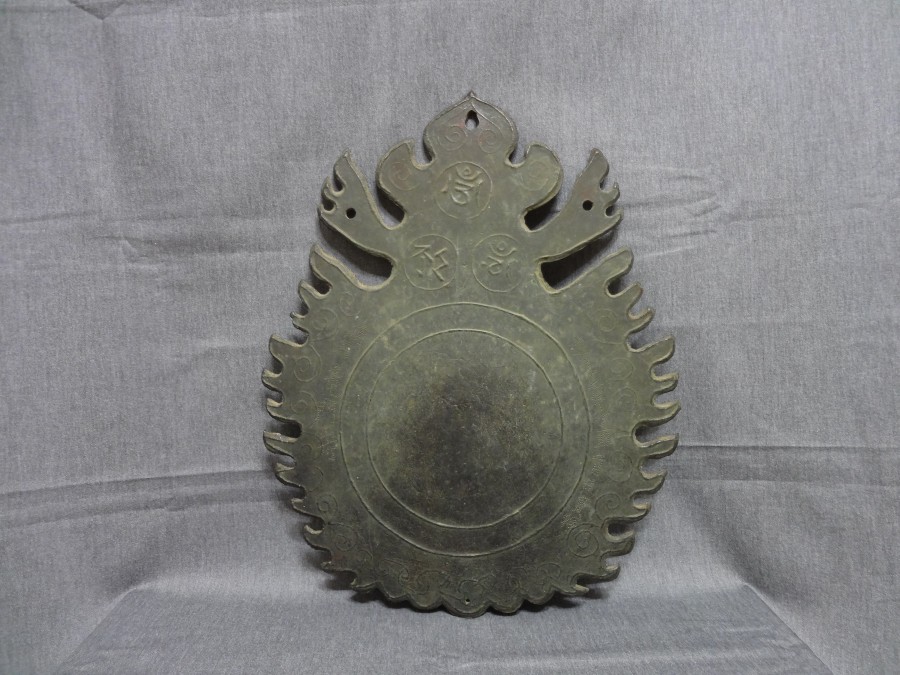English | Four Dharma Instruments
Page information
Author Jogye On25-10-13 16:30 Views564 Comments0Related links
Body
Four Dharma Instruments
The Four Dharma Instruments, also known as the Four Treasures of the Temple, are the most important ritual objects in a Korean Buddhist temple. These are the Brahma bell, Dharma drums, cloud gong, and wooden fish. As representative Buddhist crafts, they are the most emblematic of the sound-producing ritual instruments that evoke a religious atmosphere and inspiration.
1) Brahma bell
The Brahma bell is considered the most essential of the Four Instruments, excelling in both its aesthetic form and spiritual significance. Through its clear and pure sound, the Buddha's teachings are disseminated far and wide, reaching even the smallest of beings. It is said that hearing the sound of the Brahma bell can help people to eliminate their afflictions, expand their wisdom, and ultimately attain perfect enlightenment.
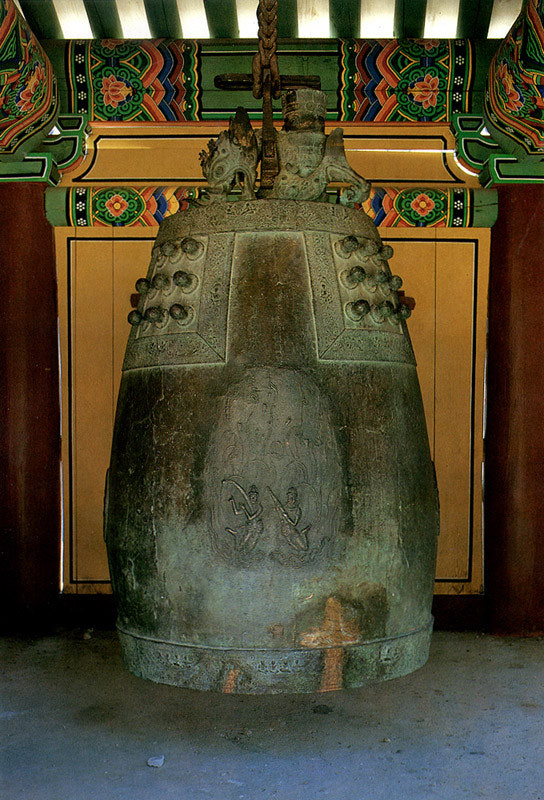
Bronze Bell of Sangwonsa Temple
National Treasure
1.67 m in height and 0.91 m in diameter (at the rim)
725 CE, the Unified Silla Period
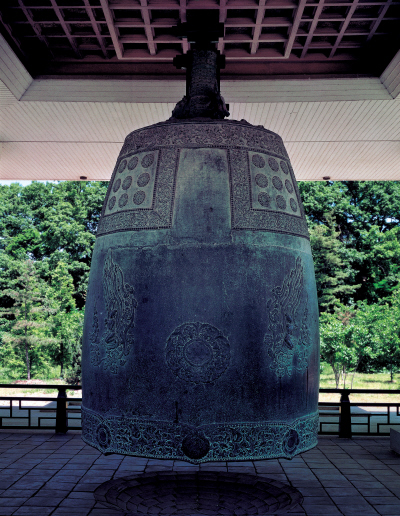
Sacred Bell of Great King Seongdeok
National Treasure
3.75 m in height, 2.27 m in diameter (at the rim)
771 CE, the Unified Silla Period
2) Dharma drums
The Dharma drums signify the ‘drum that transmits the Dharma.’ They embody the intention to awaken sentient beings to the truth realized by the Buddha through the sound of the drum. It is believed that by hearing the sound of the drums, all sentient beings are liberated from suffering and experience profound bliss. For this reason, it is always present during morning and evening services and other rituals, and must be struck strictly according to the prescribed Dharma rules.
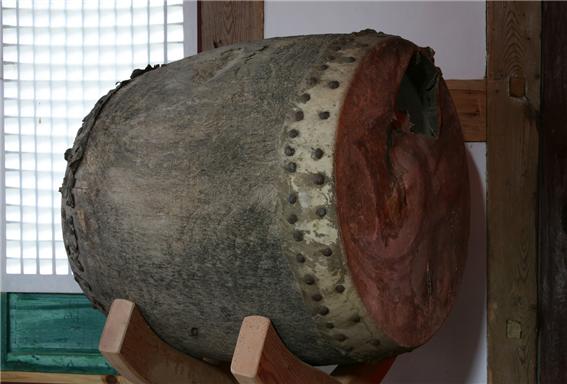
Dharma Drum at Cheongju Ansimsa Temple
Tangible Cultural Heritage
84 cm in height, 69 cm in diameter
1601 CE, Joseon Period
3) Wooden fish
The wooden fish is carved into the shape of a fish and hollowed out inside so that it produces a sound when struck. It symbolizes the intention to share the Buddha's teachings with all aquatic life, including fish, and guide them toward enlightenment through its sound.
Wooden fist at Bulguksa Temple in Gyeongju
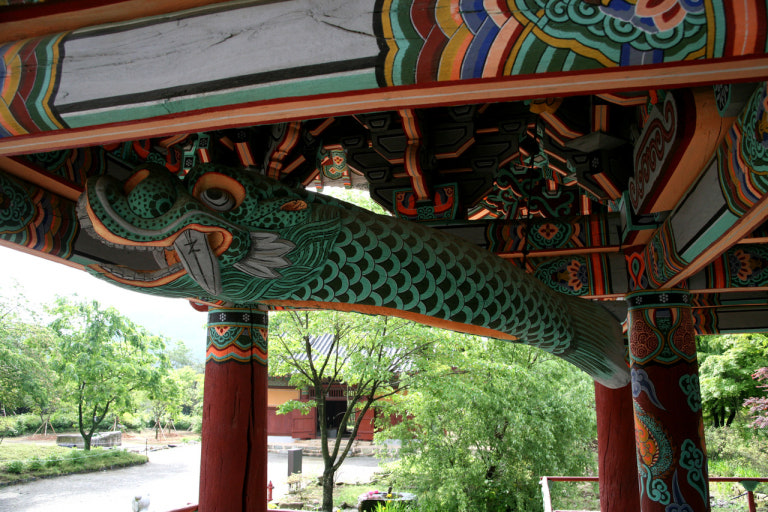
Wooden fist at Songgwangsa Temple in Wanju
4) Gloud gong
The cloud gong is a percussion instrument made with a cloud-shaped bronze or iron plate. Its shape symbolizes the extinguishing of the flames of desire and affliction burning within the minds of airborne sentient beings, much like rain extinguishes fire, thus guiding them to liberation. Originally, it was used to signal the start and end of meditation sessions, as well as to prevent drowsiness during practice. Today, it is also used to announce mealtimes, gather the assembly, and during religious ceremonies.
Cloud Gong of the 25th Year of Qianlong Emperor’s Reign at Yongmunsa Temple in Namhae
Tangible Cultural Heritage
52.5 cm in height
1760 CE, Joseon Period


